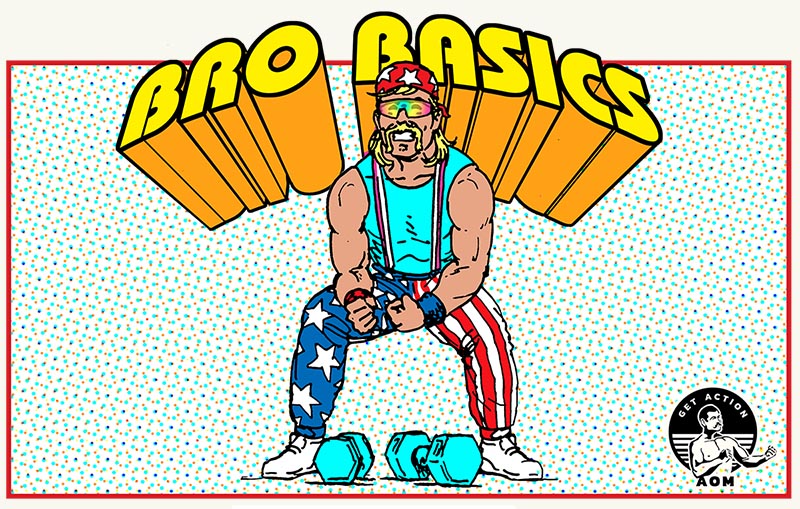
Welcome back to Bro Basics, a series which covers exercises that are popular and can be useful but are often done inadequately and solely for aesthetics, and shows the exercises’ broader function and how to perform them correctly.
While we’ve previously covered two free weight exercises — the bicep curl and the tricep extension — today we tackle an exercise performed on one of the most popular machines at the gym: the lat pulldown.
While barbells are superior to machines when it comes to the foundations of strength training, there are some mechanized movements that can be helpful for doing accessory work — “smaller,” more isolated exercises that improve your ability to perform the main lifts (deadlift, squat, shoulder press). The lat pulldown is counted among these. Plus, the exercise is effective in the aesthetics-enhancing department, and doing it just feels dang good to boot.
For insights on how best to perform the lat pulldown, I talked with my strength coach and head of Barbell Logic Online Coaching, Matt Reynolds.
What Muscles Does the Lat Pulldown Work?
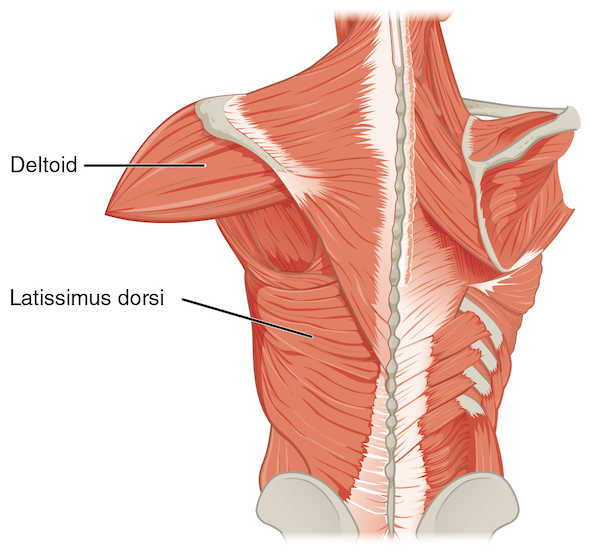
The primary muscle that the lat pulldown works is the latissimus dorsi. This is the broad, flat muscle that stretches across the back of your torso and goes under your arms. Your lats stabilize your shoulders, help with posture, allow you to swim and rock climb, and even assist in breathing.
Besides your lats, the exercise also works smaller muscles in your shoulders, traps, triceps, biceps, and forearms.
In short: the lat pulldown is a great accessory movement for strengthening your upper body.
Why Do Lat Pulldowns?
Great alternative accessory exercise if you can’t do a pull-up or chin-up. Pull-ups and chin-ups make for great accessory exercises. But if you’re still progressing towards being able to do those bodyweight exercises, the lat pulldown is an accessible way to work pretty much the same muscles. In fact, it can help you get to the point where you can do a pull-up or chin-up on your own.
Start at a weight that you can pull 10-15 times. Add weight each week. Once you can do a lat pulldown with the amount of weight that’s close to your bodyweight, you should be able to do a pull-up/chin-up.
Contributes directly to the main barbell lifts, particularly the deadlift. Whenever you deadlift, your lats play an important role in keeping your back in extension and the bar close to your shins throughout the lift. If your upper back rounds significantly or you notice that the bar is drifting away from your shins, your lats aren’t doing their job and they need to get stronger. Lat pulldowns can help with that.
Helps give you that masculine v-shaped torso. This is probably the main reason dudes do lat pulldowns. Amongst the physical traits that make men sexually attractive, the v-shaped torso — large chest, shoulder, and back muscles that taper down to a narrower waist — arguably resides supreme. To increase the size of the top part of the v, you need to work your shoulders, your chest, and your back. And since your lats make up a large part of your back, increasing their size will provide a lot of bang for your v-shaped torso buck.
How to Do a Lat Pulldown
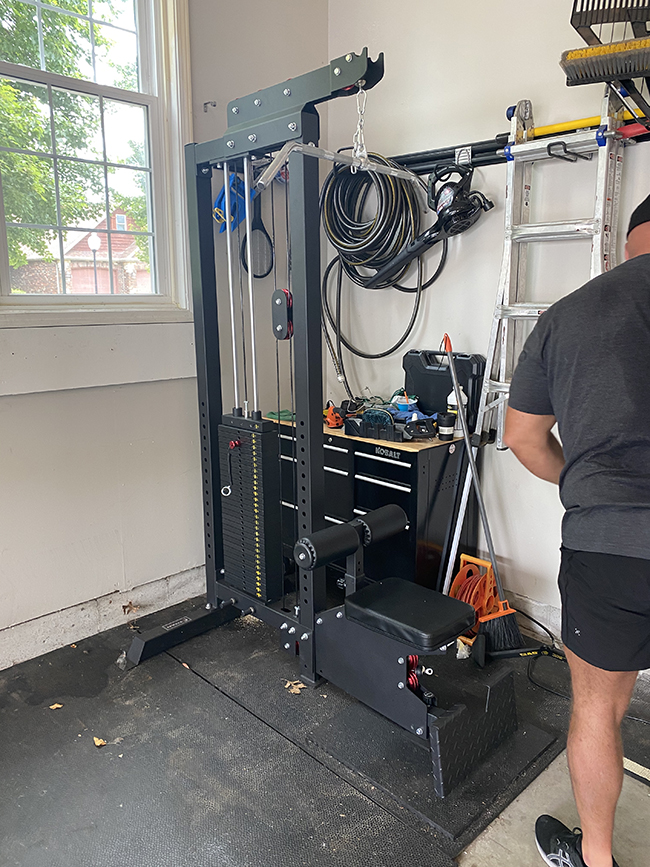
Matt’s garage gym lat pulldown machine.
To perform a lat pulldown, you’ll need access to a lat pulldown machine. Nearly all gyms have one.
If you’re a garage gym junkie and don’t have room for a lat pulldown in your garage, you can buy a pulley rig that you can attach to your power rack. I use the Spud pulley system available at Rogue. The only downside to the Spud, at least if you have a shorter rack like I do, is that you have to sit down on the ground in order to achieve the full range of motion a lat pulldown requires. It’s not a big deal, but it’s kind of annoying.
Choose Your Grip. There are a couple different ways you can grip a lat pulldown bar:
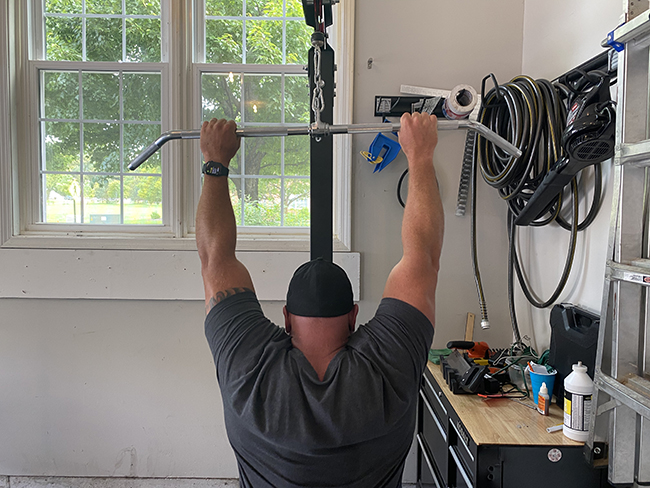
Shoulder-width apart overhand grip.
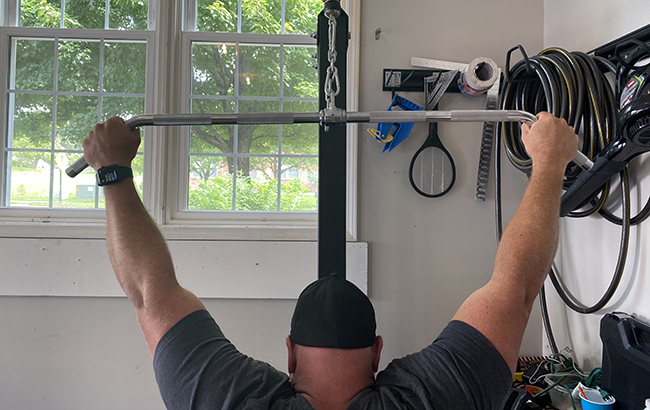
Wide overhand grip.
- Overhand Grip. The overhand grip targets the upper part of your lats more than the underhand grip does. It also provides more of a stretch throughout your lats than you can get with the underhand grip. Stretch out your arms in a y-shape, gripping the bar with your hands a little more than shoulder-width apart or wider. Don’t grip the very ends of the bar, however, as once you go too wide, the exercise stops working the lats as effectively.
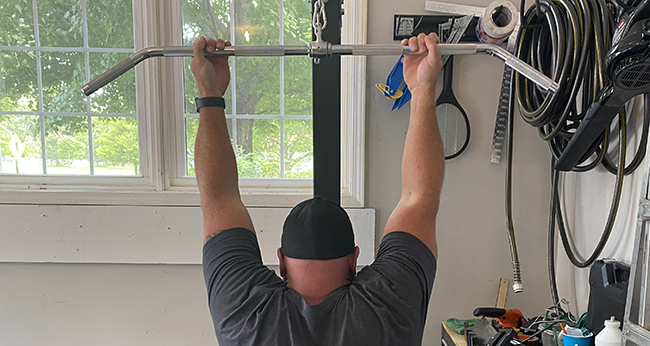
- Underhand Grip. When you take an underhand grip, your grip will naturally want to go shoulder-width apart. You can try to go wider, but it’s uncomfortable. The underhand grip targets the lower part of the lats and you feel a stronger contraction in your lats at the bottom of the movement. The other nice thing about the underhand grip is that it also works your biceps.
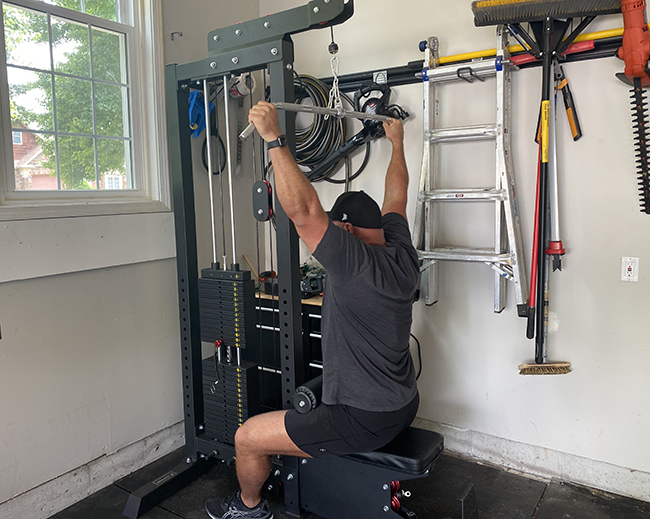
Get Situated in the Machine. If you’re using a lat pulldown machine, get yourself situated in it. Take a seat and position the knee pads so they securely keep your legs locked down while you’re performing the lift. Feet are flat on the ground, about hip-width apart.
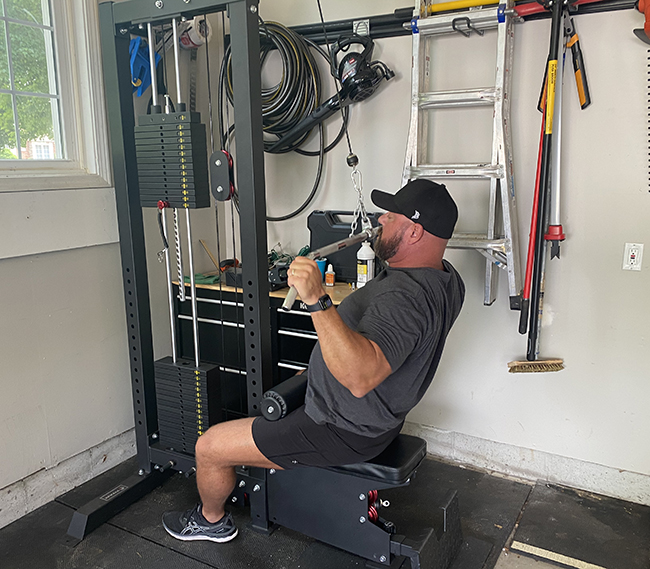
Pull bar down until it kisses your chest.
Pull Elbows Down. When you initiate the pulldown, think “pull elbows down” as a cue for correct form. Rather than letting your elbows go back or flare out, keep them in line with your hips and squeeze them toward your ribs; this will help you fully engage your lats, pull with more power, and avoid shoulder impingement.
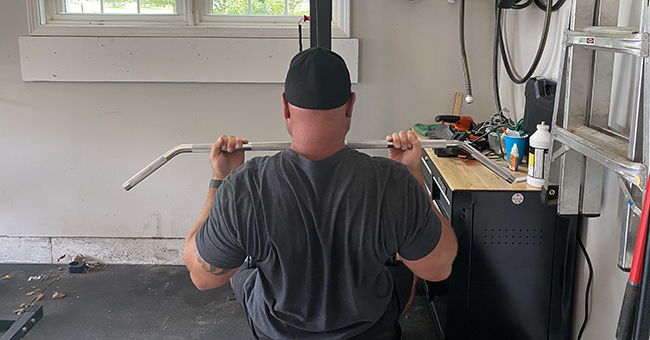
Retract shoulder blades at bottom of pull.
Meet Chest to Bar. Lower the bar down towards your upper chest (not behind your neck or in front of your chest), squeezing your shoulder blades back and down. Think “meet chest to bar.” Make your chest big and have it meet the bar as it’s coming down toward it.
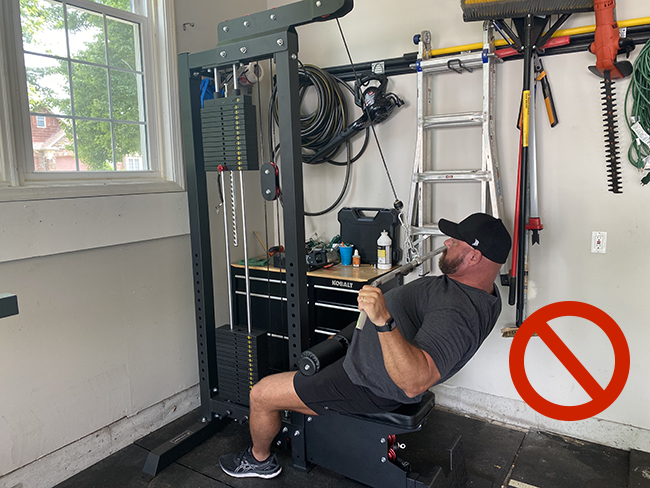
Don’t Lean Back Too Much. The biggest mistake Matt sees people making with the lat pulldown is that they lean waaay back as they’re pulling the bar down. This turns the movement into more of an inverted row, shifting which muscles are engaged, so that you miss out on some of the benefits of the lat pulldown. “It’s okay to lean back a bit, just don’t do it too much,” Matt advises.
Controlled Movement Up. Don’t just let the weight pull the bar back up. The eccentric phase of the exercise also builds muscle, so bring the bar back up in a controlled movement. You don’t have to be slow. Just controlled.
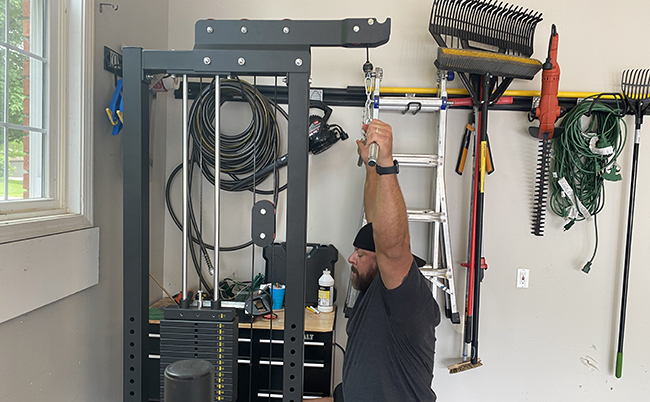
Big Stretch at the Top. This is probably the most important part of the lat pulldown movement, and the one that most people give the short shrift. At the top of the movement, get a big stretch in. As Matt told me: “This ensures you’re exercising the lats at their full range of motion which means you’re working more of the muscle.”
So at the top, think “Biiiggg stretch.”
How to Program the Lat Pulldown
As mentioned, the lat pulldown is a great accessory movement to the main barbell lifts. Matt usually programs my lat pulldowns as part of an upper body circuit that I do on the days I bench press and shoulder press.
Matt likes to program lat pulldowns at higher reps — in the 8-15 rep range. I usually do 3 sets of 10 when I do them.
Slowly add weight each week as you get stronger. Try to keep your reps in the 8-15 range. If you start pulling really heavy, you can begin decreasing volume so you do 3 sets of 5. Find what works for you.
Tags: Bro Basics, Exercises

